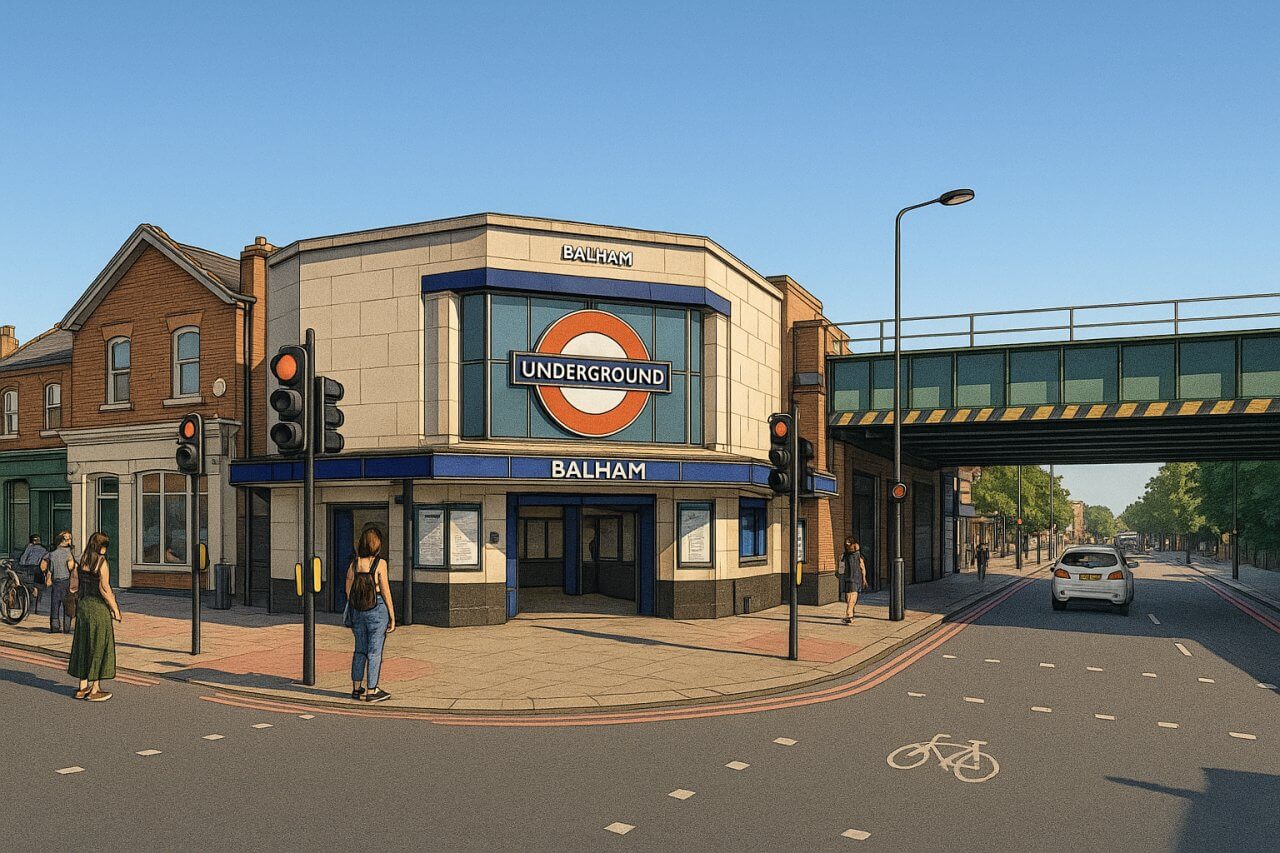
Balham Station, London
Balham Station is a key transport hub located in south London, serving both the London Underground and National Rail networks. Situated in the London Borough of Wandsworth, the station lies at the heart of Balham, a lively area known for its village-like charm and growing popularity among commuters.
Location and Entrances
The main entrance to Balham Station is situated on Balham High Road (A24), at the junction with Balham Station Road. The station's entrances provide access to both the Underground and National Rail services. The ground-level station building is a distinctive art deco structure, designed by Charles Holden. Apart from the ticket hall, the building houses a few small retail units and often features local information posters and artwork.
Balham is located approximately 4.5 miles (7.2 km) south of Charing Cross by road, making it relatively close to central London and a convenient departure point for commuters heading into the city.
Services and Connections
London Underground
Balham is served by the Northern Line, specifically the High Barnet via Bank branch. The station lies between Tooting Bec (southbound) and Clapham South (northbound). Services operate at high frequency, making Balham a reliable choice for quick travel to the City or other parts of the London Underground Stations network.
National Rail
In addition to the Underground, Balham is served by National Rail trains operated by Southern. These trains offer direct services to destinations such as Victoria Station, Clapham Junction, Croydon, and further into Surrey and Sussex. The National Rail platforms are located adjacent to the Underground ones, with convenient interchange.
History of Balham Station
Balham Station first opened on 1 December 1856 as part of the London, Brighton and South Coast Railway. The Underground station was added much later, opening on 6 December 1926 as part of the Northern Line’s southern extension.
The Underground station was designed by the architect Charles Holden, known for his modernist and functionalist designs. His style gave Balham its distinctive art deco appearance that still defines its street-level entrance today.
The station’s name derives from the surrounding district of Balham, a name that originates from the Anglo-Saxon “Bal” (rounded enclosure or settlement) and “ham” (home or village), likely referring to a historic settlement in the area. It has always been known as Balham since its inception on both the National Rail and Underground networks.
Wartime Tragedy and Legacy
One of the most somber aspects of Balham Station’s history is its role during the Second World War. On the night of 14 October 1940, a bomb fell on the road above the station during the Blitz, causing catastrophic flooding and leading to the deaths of 66 people who were sheltering in the Underground station.1 A commemorative plaque today honours the victims and ensures this event is not forgotten.
Interesting Facts
- The ticket hall and entrance are featured in several artworks, reflecting Charles Holden’s architectural legacy.
- In 2000, Balham Station was refurbished with improved lighting, tiling, and signage while preserving the original design elements.
- The station has been referenced in popular culture, notably in the classic British comedy sketch “Balham: Gateway to the South,” a parody travel documentary by Peter Sellers.
Quick Facts
- Location: Balham High Road (A24), Wandsworth, south London
- Distance from Charing Cross: Approximately 4.5 miles (7.2 km)
- Served by: London Underground (Northern Line), National Rail (Southern)
- Northern Line connections: Between Tooting Bec (southbound) and Clapham South (northbound)
- Original National Rail opening: 1 December 1856
- Underground station opening: 6 December 1926
- Architect: Charles Holden
- Design style: Art Deco
- Famous event: Bombing during WWII on 14 October 1940, resulting in 66 fatalities
- Fun fact: Featured in a Peter Sellers comedy sketch as “Gateway to the South”
References
Balham Station is  on the Map of London Underground
on the Map of London Underground

Painting of Balham Station, London (View image in full size)